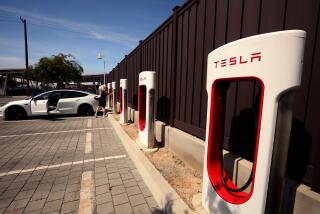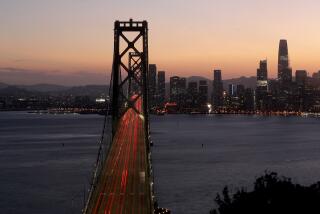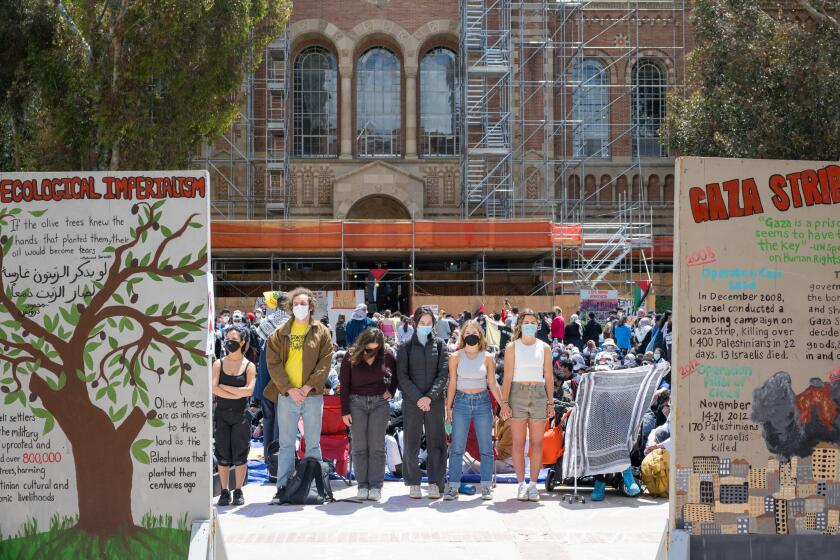Commentary: Driving an EV does not make you pro-environment

When I started driving an electric vehicle in 2018, I became part of the problem.
Not for the reasons cited by EV critics during the recent heat wave, when the state asked that electric cars not be charged during peak demand. That prompted howls of “I told you so” from those who think the electrification of everything from home appliances to cars is a left-wing pipe dream, especially in light of California’s mandate requiring 100% of all new vehicle sales to be zero-emission by 2035.
Nor am I part of the problem because of the worries expressed ad nauseum by EV skeptics, few of which have much merit.
Yes, driving distance is an issue, but only for a tiny percentage of trips.
Yes, my electricity bill is higher, but the additional cost is far lower than what drivers pay for gas.
Yes, apartment and condo dwellers who cannot plug in at night have legitimate concerns, because they must rely on our public charging infrastructure — which is growing.
Yes, EVs have a carbon footprint, but still typically much smaller than those of gas cars. On this, the evidence is so compelling that it’s hard to imagine survival on this planet unless we immediately replace gas-powered autos with electric ones. Consequently, if the state and federal governments want to take meaningful action on climate change, they have no choice but to subsidize EV buyers.
And that’s part of the problem. In the end, an electric car is still, well, a car — and mass car ownership has devastating environmental consequences beyond tailpipe emissions.
I became part of this car culture in 2018, after The Times moved from downtown L.A. to El Segundo. Until then I was a dedicated transit commuter and even held out for months after The Times’ relocation. But five hours a day on buses and trains eventually got to me, so I leased a Nissan Leaf.
Then a funny thing happened: Some well-meaning people reacted as if I had done the world a favor. Never mind the loss of a transit user to 60-mile daily drives — I had become an EV operator, once pitied for bus riding, now praised for driving.
But electric vehicles, like gas-powered cars, require vast expanses of concrete and asphalt for automotive use. This paving over of entire regions has turned neighborhoods into heat sinks that soak up energy from the sun during the day and release it at night — not exactly what we want in an era of accelerating climate change.
And electric vehicles, like gas-powered cars, force their drivers to sit in the same traffic jams as everyone else, often on freeways that required the bulldozing of long-established, minority communities to be built. In Downey, locals are fighting a highway expansion plan that would displace residents from more than 200 homes. I haven’t asked, but something tells me “yeah, but more electric cars” wouldn’t convince those residents to give up fighting for their homes.
And electric vehicles, like gas-powered cars, needlessly kill people. In the city of Los Angeles, a record 294 people were killed in traffic in 2021. Inadequate infrastructure is largely to blame, but so is the increasing size of cars — and electric cars are getting bigger too, to make them more appealing to American consumers.
This isn’t to say there aren’t benefits to replacing dirty vehicles with zero-emission ones. Cities need to curb air pollution, and electric cars cause very little of it. Children living near freeways have higher rates of asthma, and trading internal combustion engines for electric motors would certainly help them.
But replacing one kind of car for another isn’t enough if cities like Los Angeles want to be anything other than traffic-choked dystopias. Right now, subsidizing EV ownership to the tune of nearly $10,000 off a car’s sticker price (in California) may be necessary to reduce the acceleration of climate change, but it’s also just a Band-Aid to buy time for systemic change to take hold.
And what kind of systemic change would that be? Build out a big public transit system (L.A. is trying), and make it free, reliable and safe. Subsidize the purchase of electric bikes, which make it easier to commute longer distances on devices that use considerably less power and road space than electric cars. Think more of what people in neighborhoods need than what people driving through those neighborhoods want.
And for the love of God, shelter every bus stop on every block, so riders don’t risk sunstroke when they take transit during a heat wave.
More to Read
A cure for the common opinion
Get thought-provoking perspectives with our weekly newsletter.
You may occasionally receive promotional content from the Los Angeles Times.







